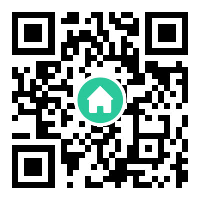Telegram mini apps have emerged as a groundbreaking innovation in the realm of instant messaging platforms, redefining how users interact with services without leaving their favorite chat app. By integrating lightweight, web-based applications directly into Telegram’s interface, these mini apps eliminate the need for separate downloads or app switches. This seamless fusion of communication and functionality positions Telegram as more than just a messaging tool—it becomes a versatile ecosystem for work, entertainment, and commerce.

The Rise of Telegram Mini Apps: A New Era for Developers
Telegram mini apps leverage JavaScript frameworks to create interactive experiences that feel native to the platform. Developers can build everything from productivity tools to multiplayer games, all hosted within Telegram’s infrastructure. Unlike traditional app stores, Telegram’s open ecosystem reduces barriers to entry, enabling indie developers and startups to reach over 900 million active users instantly. The platform’s Bot API further enhances mini apps by enabling features like payment processing, user authentication, and real-time notifications.
User-Centric Design: Why Mini Apps Thrive on Telegram
The success of Telegram mini apps hinges on their frictionless user experience. By operating within chat threads or dedicated interfaces, these apps bypass installation delays and storage constraints. For instance, a user can order food, play a puzzle game, or book a taxi without ever closing their conversation window. This design philosophy aligns with modern demands for speed and convenience, making Telegram a hub for micro-interactions. Additionally, Telegram’s end-to-end encryption ensures that sensitive data shared within mini apps remains secure.
Monetization and Business Opportunities
Telegram mini apps unlock novel revenue streams through in-app purchases, subscriptions, and advertising. The platform’s integrated payment system, Telegram Stars, allows developers to monetize globally while complying with regional regulations. Brands like Burger King and Duolingo have already experimented with mini apps for promotions and language learning, demonstrating their commercial viability. For small businesses, these tools offer affordable ways to build customer loyalty via chatbots and personalized services.
Challenges and Future Prospects
Despite their potential, Telegram mini apps face challenges such as discoverability and platform dependency. Unlike standalone apps, they rely entirely on Telegram’s policies and algorithmic visibility. However, ongoing updates—like the recent Web Apps 2.0 feature set—signal Telegram’s commitment to refining the ecosystem. Analysts predict that mini apps could drive Telegram’s evolution into a "super app," rivaling platforms like WeChat in functionality.
Conclusion: Redefining Digital Interaction
Telegram mini apps represent a paradigm shift in how technology integrates into daily life. By merging communication with actionable services, they blur the lines between chatting and accomplishing tasks. As developers continue to innovate and Telegram expands its capabilities, mini apps may soon become indispensable tools for both individuals and enterprises. In a world craving simplicity, Telegram’s vision of an all-in-one platform powered by mini apps is not just ambitious—it’s inevitable.












